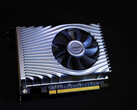Khronos Group, the overseers of the Vulkan graphics API standard, recently announced the public release of ray tracing extensions for Vulkan. This is a major step towards the wider adoption of ray-tracing in games: previously, Microsoft had announced the DXR extension to its proprietary DirectX API for ray-tracing support.
Vulkan ray-tracing, however, is the first open-source API solution. More than anything else, this shows that ray-tracing isn’t a proprietary fad like HairWorks or PhysX, and that the community’s been working on a solution since at least 2018. Strictly speaking, vendor-specific ray-tracing implementations have existed on Vulkan for quite some time:the RTX-enabled Vulkan title Wolfenstein: Youngblood used Nvidia’s vendor-specific extensions.
Vulkan’s new ray-tracing support doesn’t offer anything radically new, apart from feature parity with the DXR 1.1 standard. However, Khronos’ announcement hints at potential performance benefits from running ray-tracing workloads over Vulkan. This in terms of the “Build Acceleration Structure on Host” feature, which essentially pushes some of the ray-tracing workload back to idle CPU cores.
In games that don’t fully saturate 12 or 16 threads, this could be a great way of extracting additional performance. With the Xbox Series X’s ray-tracing capabilities confirmed and now the Vulkan announcement, we might finally start games deploy ray-tracing features without being limited to Nvidia’s RTX series.











